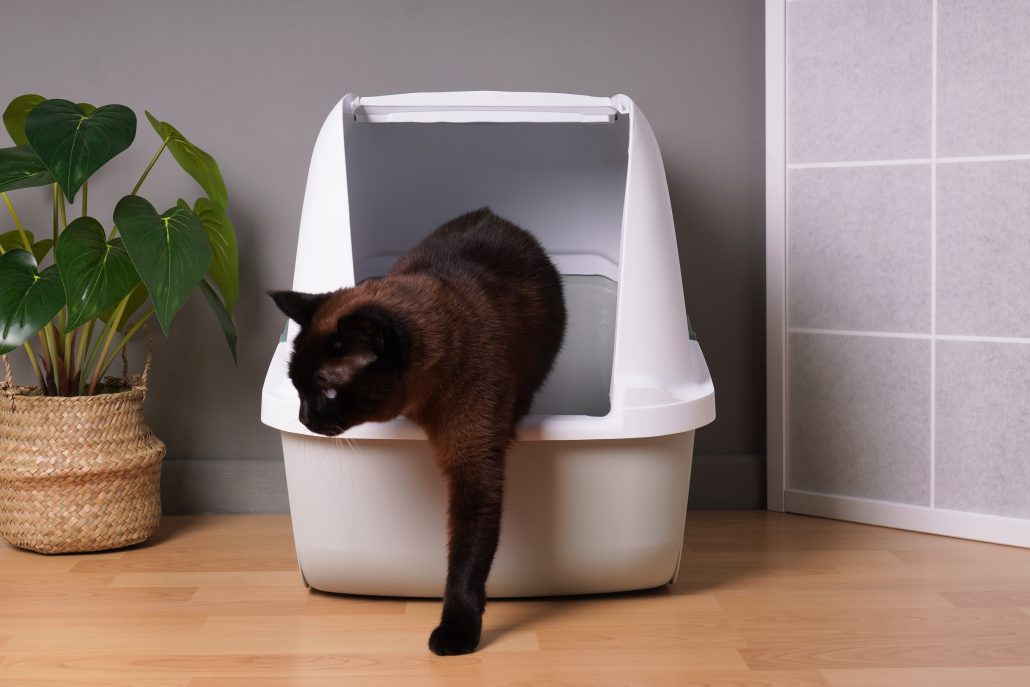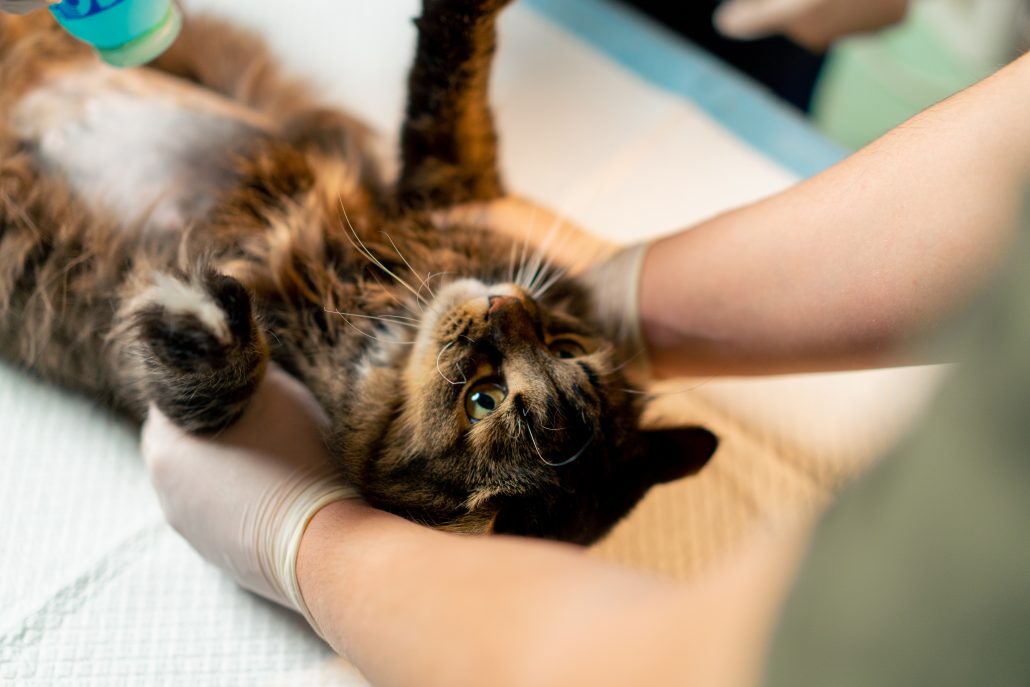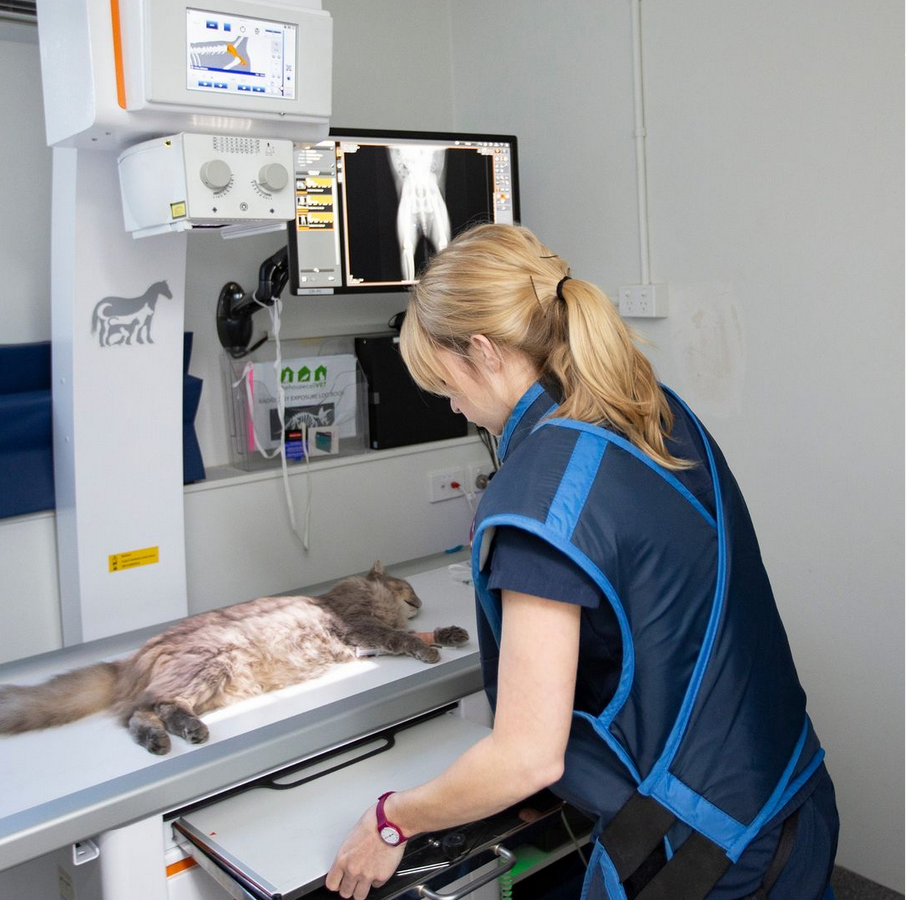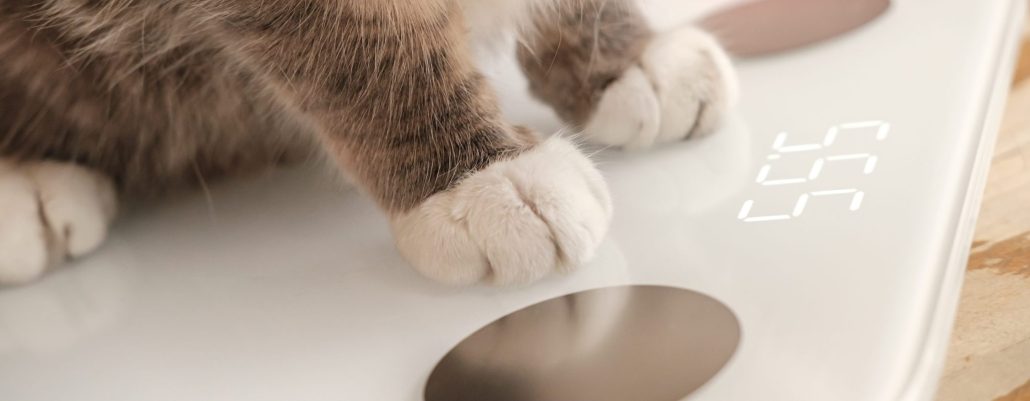
As a cat owner, you understand the joys and responsibilities that come with caring for these mysterious and majestic creatures. And as a beloved companion, we become very accustomed to their daily habits and can often quickly see when their bathroom habits change (thanks to litterbox duty!)
One common, yet misunderstood problem that cats can experience is a urinary tract infection (UTI). In this guide, we explain what you need to know about UTI’s in cats. From understanding the causes and symptoms to exploring preventive measures and treatment options, we arm you with the knowledge needed to navigate this common yet often overlooked aspect of feline health.
What Is A Urinary Tract Infection (UTIs) in Cats?
Before getting into the nitty gritty, we take a closer look at what exactly Urinary Tract Infections (UTIs) are.
A urinary tract infection (UTI) occurs when bacteria enter the urinary system of a cat and multiply, leading to an infection. The urinary tract includes the kidneys, ureters, bladder, and urethra. UTIs can affect any part of this system, but they most commonly occur in the lower urinary tract, which comprises the bladder and urethra.
However, it is important to note that while we do often see cats with urinary problems, felines are more likely to suffer from urinary tract disease than infection. So, cats who often develop a UTI may also be suffering from conditions such as endocrine diseases, such as hyperthyroidism and diabetes mellitus. Cats of all ages can develop UTIs, but it is more prevalent in older or overweight cats.
Feline Urinary Tract Disease (FLUTD)
Feline Urinary Tract Disease is an umbrella term that encompasses a number of clinical symptoms affecting the urinary system of cats. This condition can pose significant challenges as it may manifest in various ways, causing issues in your cat’s urethra and bladder.
While it is not a very common issue, one of the most concerning aspects of Feline Urinary Tract Disease is its potential to obstruct the urethra or impede proper bladder emptying. This obstruction can lead to discomfort, pain, and in severe cases, life-threatening complications if left untreated.
Read More: Reasons to Bring Your Cat to the Vet

Exploring the Causes of Lower Urinary Tract Problems in Cats
Lower Urinary Tract Problems in Cats can be caused by a variety of factors, each with their own set of challenges and treatments. However, understanding these causes is key to effectively managing and preventing urinary issues in your feline friend.
- Bacterial Infection: A common culprit behind lower urinary tract problems in cats is a bacterial infection in their bladder or urethra. These infections can cause inflammation and discomfort, leading to symptoms such as frequent urination and straining.
- Urinary Stones: Urinary stones, also known as uroliths or bladder stones, can form in the bladder or urethra, causing obstruction or irritation. These stones can vary in composition, including and may require surgical removal or dietary management.
- Urethral Obstruction: Blockage of the urethra, often by urinary stones or crystals, is a serious and potentially life-threatening condition in cats. This obstruction prevents urination, leading to a buildup of toxins in the body that can quickly become fatal if not addressed promptly.
- Feline Idiopathic Cystitis: Feline idiopathic cystitis (FIC) is a condition characterised by inflammation of the bladder without any identifiable cause. Stress, diet, and environmental factors are believed to play a role in the development of FIC, which can cause recurrent episodes of lower urinary tract signs in affected cats.
- Incontinence: Weak bladder muscles or excessive water consumption can contribute to urinary incontinence in cats. This may result in involuntary urination or dribbling, leading to hygiene issues and discomfort for your cat.
- Other Causes: Beyond bacterial infections and urinary stones, lower urinary tract problems in cats can also be attributed to underlying medical conditions such as diabetes, thyroid issues, and, in rare cases, tumors in the urinary tract. These conditions, however, require thorough evaluation and targeted treatment to address the root cause effectively. Other factors such as using an indoor litter box, having a multi-cat household, sudden changes to their daily routine, or environmental or emotional stress can also leave you cat more vulnerable to urinary tract disease.
Signs and Symptoms of Urinary Tract Infections in Cats
Recognising the signs and symptoms of UTIs in cats is crucial for early detection and treatment. Some common indicators include:
- Frequent urination: Keep an eye out for frequent small amounts of urine being passed.If you notice that your cat is making more trips to the litter box than usual, it could be a sign of a UTI.
- Straining to urinate: Cats with UTIs may exhibit difficulty or discomfort while urinating. They may spend an extended amount of time in the litter box, straining to pass urine.
- Blood in urine: Hematuria, or blood in the urine, is a concerning symptom that should not be ignored. If you notice any red or pink discoloration in your cat’s urine, it is essential to seek veterinary attention as soon as possible.
- Urinating outside the litter box: Cats with UTIs may associate the litter box with pain or discomfort, leading them to urinate outside of it more frequently. If your cat suddenly starts having accidents around the house, it could be a red flag of pain or discomfort.
- Lethargy and loss of appetite: UTIs can make cats feel unwell and cause a decrease in their energy levels and appetite. If you notice a sudden change in your cat’s behaviour or eating habits, it is worth investigating further.
- Excessive licking: Cats with UTIs may engage in excessive grooming of their genital area as a response to discomfort or irritation.
Remember, these symptoms may also be indicative of other health issues, so it is important to consult a veterinarian for an accurate diagnosis.
Read More: How Often Should Your Cat Have a Checkup

Diagnosing Urinary Tract Infections in Cats
Google can be a big help when it comes to the care of your feline companion, however, if you suspect that your cat has a UTI, it is important to have them evaluated by your local veterinarian for an accurate diagnosis. Your vet will conduct a thorough examination and may recommend additional tests to confirm the presence of a UTI.
One common diagnostic method used is a urinalysis, which involves analysing a urine sample for the presence of bacteria, blood, or abnormalities. In some cases, a urine culture may be necessary to determine the specific bacteria causing the infection and guide appropriate treatment.
Treatment & Recovery for Urinary Tract Infections in Cats
The treatment of UTIs in cats typically involves a combination of medication, supportive care, and lifestyle changes. Antibiotics are commonly prescribed to eliminate the bacterial infection. The duration and type of antibiotic will depend on the severity and specific bacteria involved.
In addition to medication, your veterinarian may recommend increasing your cat’s water intake to flush out the urinary system. Providing fresh water sources and considering wet food can help encourage increased hydration. If your cat has bladder stones or crystals, a special diet may be prescribed to dissolve or prevent the formation of these urinary tract irritants.
Most cats respond well to treatment and recover fully from UTIs. However, it is essential to complete the full course of antibiotics as prescribed by your vet, even if your cat’s symptoms improve. Not doing so can lead to antibiotic resistance and recurring infections.

Preventing Urinary Tract Infections in Cats
As with anything related to your companions health, prevention is always better than treatment, and this is especially true when it comes to urinary tract complications.
- Hydration: Ensure your cat has access to fresh water at all times. Encouraging them to drink more water can help dilute the urine and flush out potential bacteria.
- Litter box hygiene: Cats are more likely to hold their urine rather than use a dirty litter box, which has the potential to cause the build up of toxins in the body. Clean the litter box regularly to prevent the build-up of bacteria and consider providing multiple litter boxes for households with multiple cats.
- Diet: Feed your cat a high-quality, balanced diet that promotes urinary health. Consult your veterinarian for recommendations on the best diet for your cat’s specific needs.
- Regular veterinary check-ups: Schedule routine check-ups to monitor your cat’s overall health and catch any potential issues early on.
When to See a Vet: Red Flags & Emergency Situations
While some cases of UTIs in cats may resolve with effective treatment, it is crucial to seek veterinary attention if you notice any of the following red flags or emergency situations:
- Severe pain or distress: Cats in extreme pain or distress, vocalizing excessively, or displaying aggressive behaviour may require urgent medical attention.
- Recurring UTIs: If your cat experiences recurring UTIs, it may indicate an underlying issue that needs further investigation and treatment.
- Changes in appetite or behaviour: Any sudden changes in your cat’s eating habits, energy levels, or behaviour should prompt a visit to the vet.
Remember, it is always better to err on the side of caution and consult a professional if you have any concerns about your cat’s urinary health. It’s always better to be safe than sorry, they are family after all!

Taking Care of Your Cat's Urinary Health
It is clear that vigilance and understanding is our greatest ally when safeguarding our feline companions’ urinary health. From understanding the complexities of UTIs and lower urinary tract issues to uncovering the signs, symptoms, causes, and treatment options available, we can ensure the long-time health and happiness of our beloved furry friends.
Remember, your veterinarian is your best resource for guidance on your cat’s urinary health, so don’t hesitate to reach out if you have any concerns! As experts in your cat’s care, The House Call Vet to providing personalised attention and comprehensive support for all aspects of your cat’s well-being, including urinary health. Book your appointment or get in touch to learn more today!

